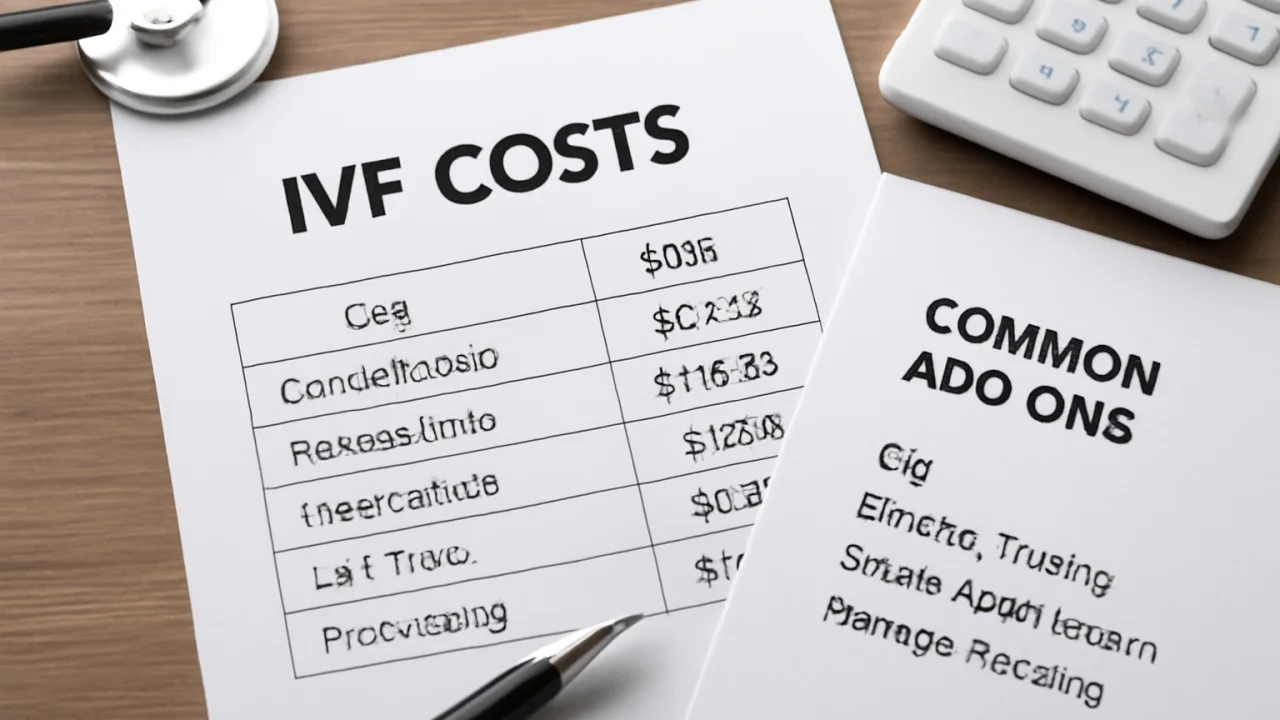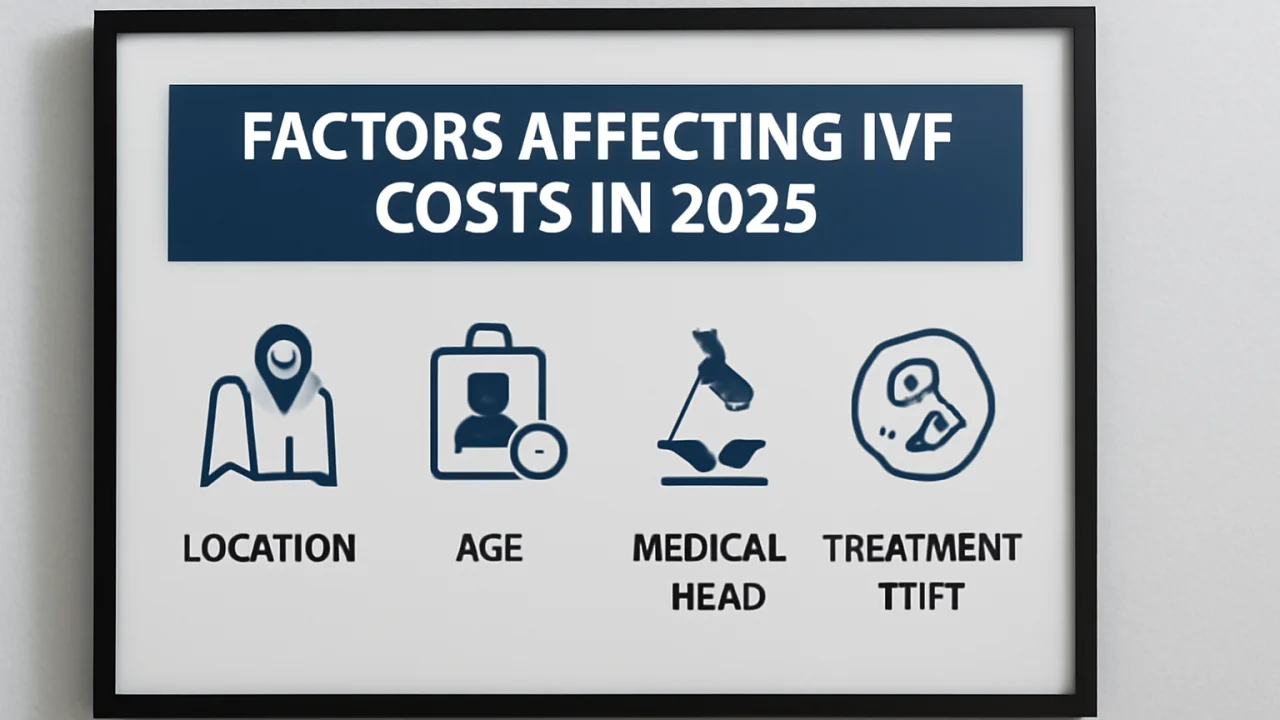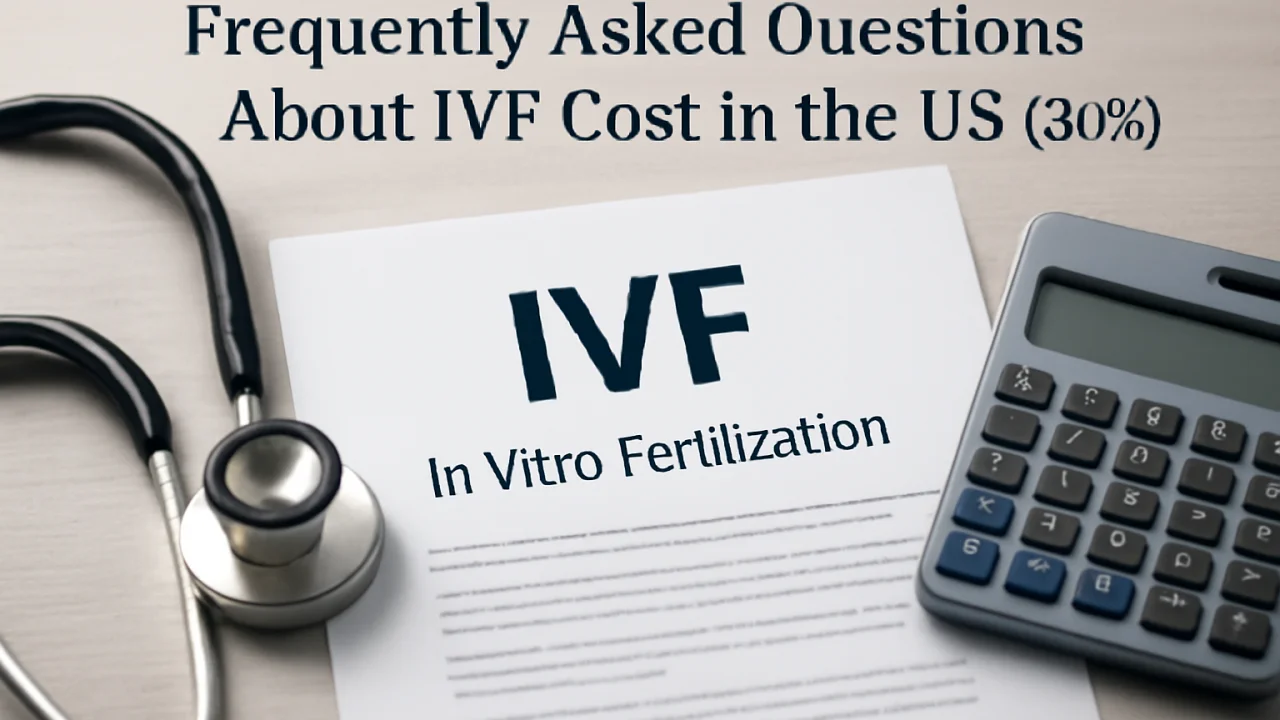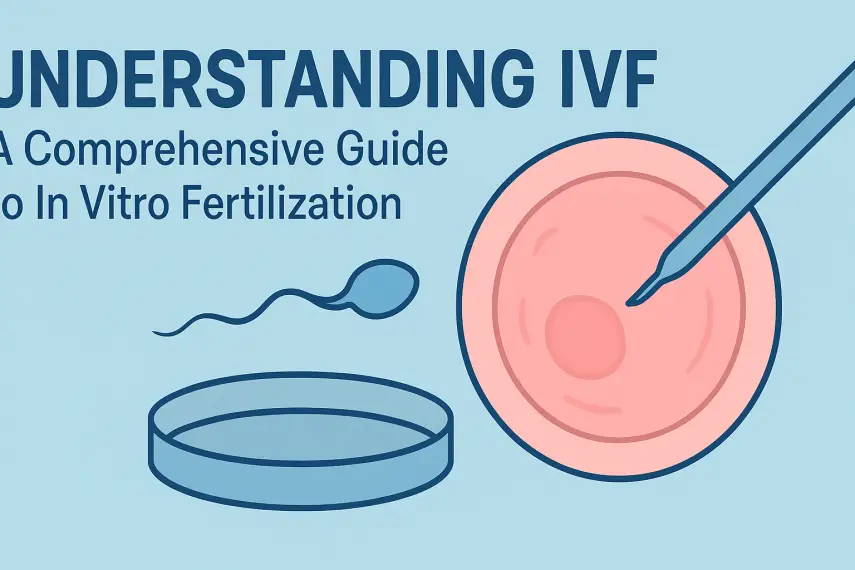
IVF Cost in the US: What You Should Expect in 2025
📑 Contents
For many families facing fertility challenges, understanding the IVF cost in the US is a crucial part of planning for in vitro fertilization. As 2025 approaches, it’s important to stay informed about the latest pricing trends, what influences these costs, and how you can prepare financially for your fertility journey.
What Is IVF and Why Does It Cost So Much?

IVF (in vitro fertilization) is a complex medical procedure that involves fertilizing eggs with sperm outside the body and transferring the resulting embryo(s) to the uterus. The process requires advanced technology, specialized medical expertise, and can span multiple weeks or months. These factors contribute to IVF’s relatively high cost compared to other fertility treatments.
Average IVF Cost in the US for 2025

The average IVF cost in the US in 2025 is expected to range between $12,000 and $16,000 per cycle, not including medication or additional services. However, total expenses can vary significantly based on location, clinic reputation, and individual patient needs.
| Region | Average Cost per Cycle (2025) |
|---|---|
| West Coast (CA, WA, OR) | $14,000 - $18,000 |
| East Coast (NY, MA, NJ) | $13,000 - $17,000 |
| Midwest | $11,000 - $15,000 |
| South | $10,000 - $14,000 |
| National Average | $12,000 - $16,000 |
What’s Included in the Base IVF Cost?
- Initial fertility testing and consultation
- Ovarian stimulation monitoring
- Egg retrieval procedure
- Laboratory fertilization
- Embryo culture and transfer
Medications, genetic testing, embryo freezing, and storage fees are typically not included in base prices.
Additional IVF Costs and Common Add-Ons

Many patients choose or require extra services, which can significantly increase overall expenses. Here are some common add-ons and their estimated costs for 2025:
| Add-On Service | Estimated Cost (2025) |
|---|---|
| Fertility medications | $3,000 - $7,000 per cycle |
| Preimplantation Genetic Testing (PGT) | $3,000 - $6,000 |
| Embryo freezing (cryopreservation) | $1,000 - $2,500 |
| Embryo storage (annual) | $500 - $1,000 |
| ICSI (intracytoplasmic sperm injection) | $1,500 - $2,500 |
| Donor eggs or sperm | $2,000 - $10,000+ |
Insurance Coverage for IVF in the US

Insurance coverage for IVF varies widely by state and employer. As of 2025, 21 states mandate some form of fertility insurance coverage, but only a portion require insurers to cover IVF specifically.
| State | Mandated IVF Coverage? | Notes |
|---|---|---|
| Massachusetts | Yes | Comprehensive IVF coverage |
| Illinois | Yes | Includes several IVF cycles |
| California | No | Requires coverage for infertility diagnosis, not IVF |
| Texas | No | Limited fertility coverage |
| New York | Yes | Covers up to 3 IVF cycles |
Even in mandated states, coverage may have restrictions such as age limits, marital status, or diagnosis requirements. Always check with your insurer and clinic for up-to-date details.
Factors Affecting IVF Costs in 2025

- Clinic Location: Urban clinics, especially on the coasts, tend to charge higher fees.
- Clinic Reputation: Renowned, high-success-rate clinics may have higher base costs.
- Patient Age and Health: Additional cycles and medications may be needed, especially for older patients.
- Use of Donor Eggs/Sperm: Adds significant expense.
- Type and Number of Procedures: ICSI, PGT, and other advanced techniques increase costs.
How to Afford IVF: Financial Assistance and Cost-Saving Strategies

Given the high price tag, many families explore ways to make IVF more affordable. Here are some potential options:
- Financing Programs: Many clinics partner with lenders to offer low-interest loans or payment plans.
- Fertility Grants and Scholarships: Nonprofits like the Baby Quest Foundation and RESOLVE provide limited grants.
- Shared Risk or Refund Programs: Some clinics offer money-back guarantees if treatment is unsuccessful after several cycles.
- Flexible Spending Accounts (FSAs) and Health Savings Accounts (HSAs): These tax-advantaged accounts can be used for eligible IVF expenses.
- Traveling for IVF: Some patients save by seeking treatment in lower-cost regions or countries.
Frequently Asked Questions About IVF Cost in the US (2025)

1. What is the average total cost of one IVF cycle in the US in 2025?
The average total cost (including medications and typical add-ons) ranges from $15,000 to $25,000 per cycle.
2. Does insurance cover any part of IVF?
Coverage depends on your state and employer. Some states require insurers to offer or cover IVF, but exclusions and limits are common.
3. Are fertility medications included in the quoted IVF price?
Usually not. Medications typically cost an extra $3,000–$7,000 per cycle.
4. How many IVF cycles does the average patient need?
On average, patients undergo 2–3 cycles to achieve a live birth, though this varies by age and diagnosis.
5. Can I finance my IVF treatment?
Yes, many clinics and third-party lenders offer financing options and payment plans for fertility treatments.
6. Is IVF cheaper in some US states than others?
Yes. Costs are generally lower in the Midwest and South compared to the Northeast and West Coast.
7. Are there ways to reduce IVF costs?
Consider shared risk programs, grants, employer benefits, or traveling to lower-cost clinics.
8. Is IVF tax-deductible?
Some IVF-related expenses may be tax-deductible as medical expenses if they exceed a certain percentage of your adjusted gross income. Consult a tax advisor for details.
Conclusion: Planning for IVF Costs in 2025

IVF cost in the US remains a significant financial commitment in 2025, but understanding the factors involved can help you make informed decisions. Carefully research clinics, insurance options, and financial assistance programs to maximize your chances of success while minimizing financial stress. For more detailed information and updates on fertility treatments, visit isayinfo.com today.











